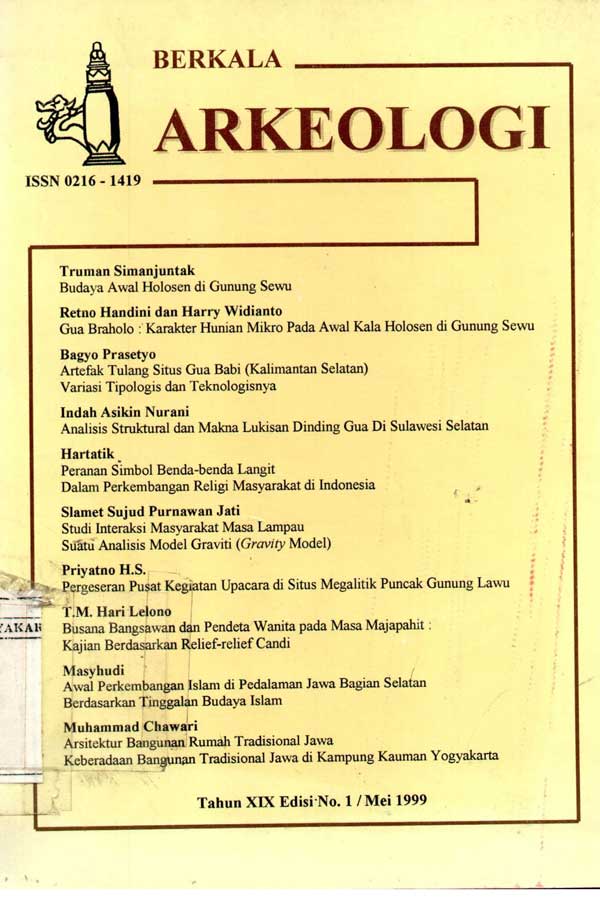ARTEFAK TULANG SITUS GUA BABI (KALIMANTAN SELATAN): VARIASI TIPOLOGIS DAN TEKNOLOGISNYA
Main Article Content
Abstract
This site was first discovered in 1995 by a team from the Balai Arkeologi Banjarmasin together with the Puslit Arkenas when carrying out an exploratory survey in the Meratus Mountains. Observation of the ground surface in the cave shows an indication of archaeological data that needs further research. Then continuously, the Banjarmasin Archeology Center carried out excavations from 1996 to 1998. Based on this research, it has produced a number of archaeological data in the form of stone tools industry, bone artifacts, jewelry and pottery. Apart from artifactual data, the remains of fauna, mollusk shells and human components were also found.
Article Details

This work is licensed under a Creative Commons Attribution-NonCommercial-ShareAlike 4.0 International License.
References
Bray, Waiwick dan David Trump, 1970. The Penguin Dictionary of Archaeology. Penguin Reference Books.
Kidwell, S.M., 1985. Paleobiological and sedimentological implications of Fossil Concentration, dalam Nature 318. Hlm. 457-460.
Mulvaney, D.J., tt, The Prehistory of the Australian Aborigine, dalam Scientific American 214. Hlm. 84-93.
Mulvaney, D.J., 1969. The Prehistory of Australia. Thames and Hudson. London.
Mulvaney, D.J., dan RP. Soejono, 1970. The Australian-Indonesian Archaeological Expedition to Sulawesi, dalam Asian Perspective vol. 13. Hlm. 171.
Prasetyo, Bagyo, belum terbit. Persebaran Alat Tulang di Asia Tenggara Daratan maupun Kepulauan, dalam Pertemuan Ilmiah Arkeologi VIII di Yogyakarta tahun 1999. Ikatan Ahli Arkeologi Indonesia.
Robbins, Maurice, 1981. The Amateur Archaeologist's Handbook. New York: Harper & Row.
Widianto, Harry et.al, 1997. Ekskavasi Situs Gua Babi, Kabupaten Tabalong, Provinsi Kalimantan Selatan, dalam Derita Penelitian Arkeologi Balai Arkeologi Banjarmasin No. 01. Banjarmasin: Pusat Penelitian Arkeologi Nasional Balai Arkeologi Banjarmasin.
Wirawan, 1981. Tulang. Akadoma.

